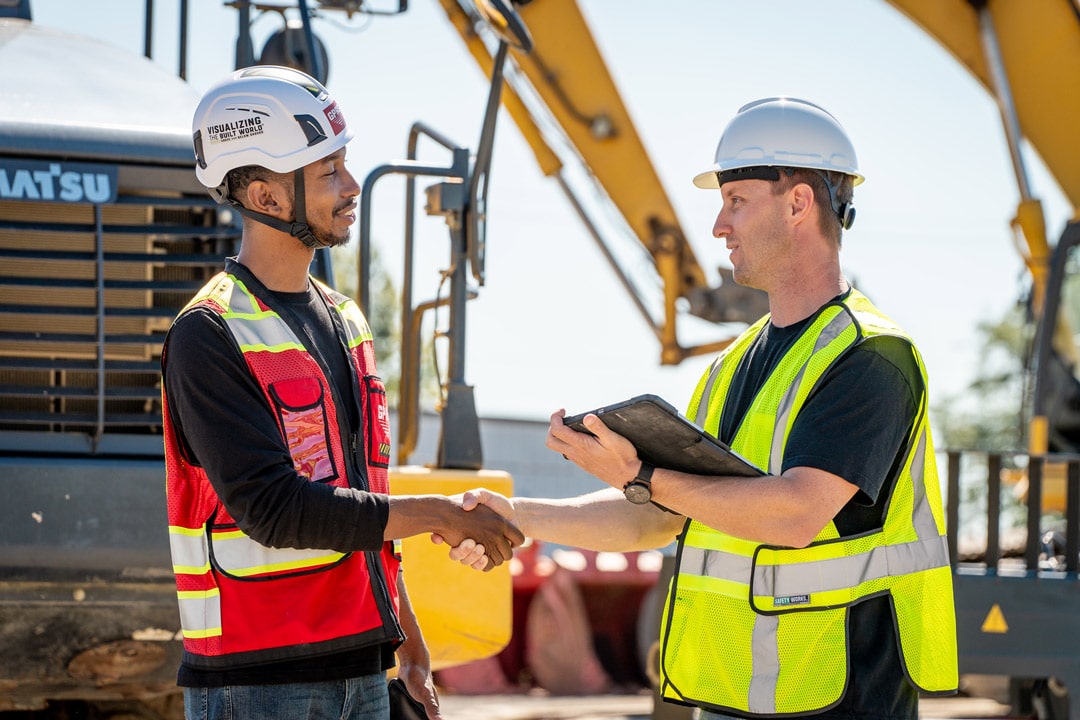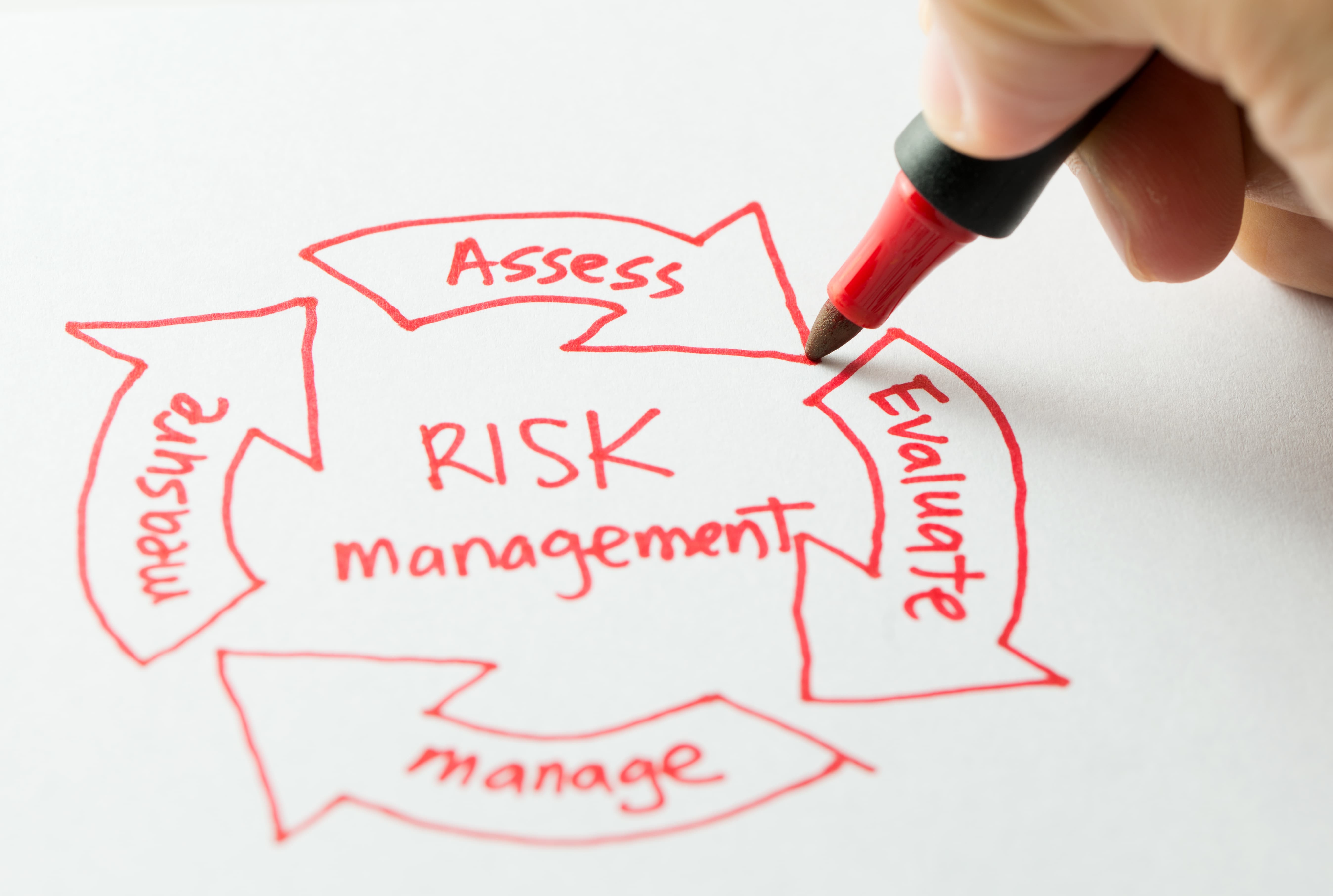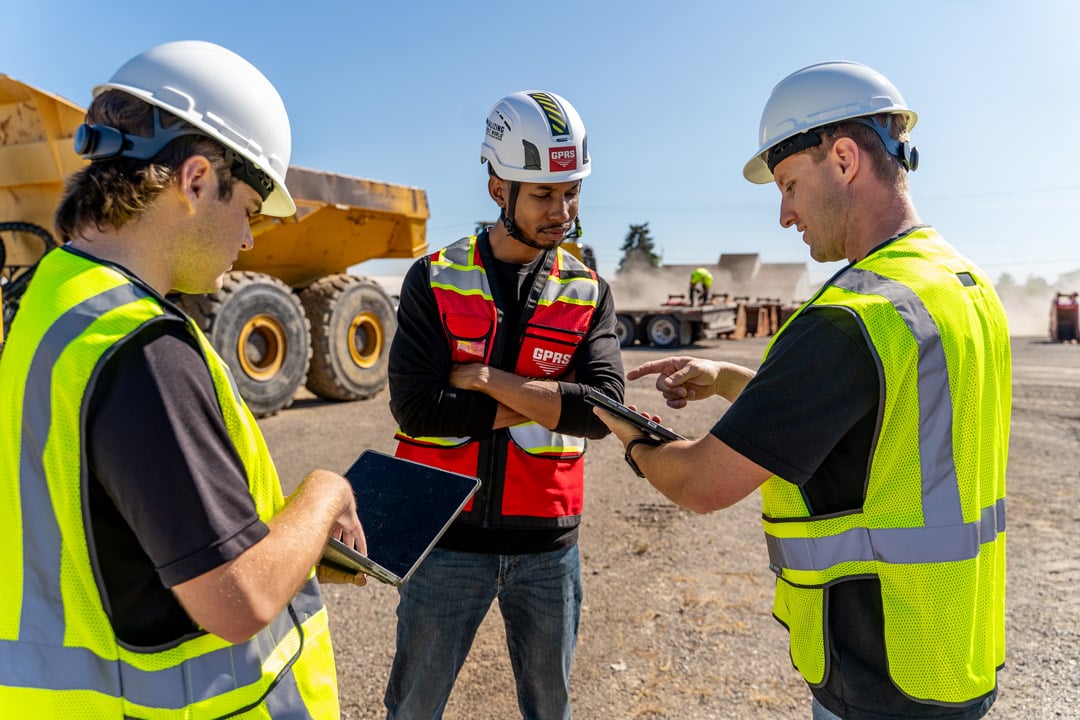According to the Common Ground Alliance (CGA) there are between 400,000 and 500,000 utility strikes reported in the US each year, many of them from excavators commonly used in construction.
In construction projects, risk mitigation stands as a critical imperative for ensuring the safety, efficiency, and success of infrastructure endeavors. From unforeseen delays to budget overruns and safety hazards, construction projects are inherently prone to various risks that can have far-reaching consequences. As such, proactive risk management strategies are essential for safeguarding against potential disruptions and minimizing liabilities. Let’s examine the vital role of risk mitigation in construction projects and explore how SiteMap® (patent pending), powered by GPRS, offers innovative solutions to enhance safety and resilience in infrastructure management.

Understanding Risk in Construction Projects
Construction projects are multifaceted endeavors that involve numerous stakeholders, complex workflows, and diverse challenges. As such, they inherently carry inherent risks that can manifest in various forms throughout the project lifecycle.
Common risks in construction include:
Budget Overruns
Unforeseen expenses, material shortages, and scope changes can lead to budgetary constraints and financial setbacks.
Schedule Delays
Factors such as adverse weather conditions, supply chain disruptions, and regulatory approvals can cause delays in project timelines.
Safety Hazards
Construction sites are inherently hazardous environments, with a significant risk of accidents, injuries, and fatalities for workers and bystanders.
Design Errors
Inaccurate designs, miscommunications, and coordination issues can result in rework, delays, and cost escalations.
Environmental Impacts
Construction activities may have adverse effects on the environment, including pollution, habitat destruction, and resource depletion.
The Role of Risk Mitigation in Construction

Effective risk mitigation is crucial for identifying, assessing, and addressing potential risks in construction projects to prevent or minimize their impact on project outcomes. By implementing proactive risk management strategies, construction stakeholders can:
- Enhance Safety: Prioritize the safety and well-being of workers and stakeholders by identifying and mitigating safety hazards through comprehensive safety protocols and training programs.
- Ensure Compliance: Stay abreast of regulatory requirements and industry standards to ensure compliance with legal and ethical obligations, thereby reducing the risk of fines, penalties, and legal liabilities.
- Optimize Resource Allocation: Allocate resources efficiently by identifying potential risks and allocating contingency funds, time buffers, and resources to mitigate their impact on project performance.
- Improve Decision Making: Empower project teams with real-time data, insights, and analytics to make informed decisions and proactively address emerging risks throughout the project lifecycle.
- Enhance Stakeholder Communication: Foster open communication and collaboration among project stakeholders to facilitate early identification and resolution of risks, thereby minimizing their impact on project outcomes.
Leveraging SiteMap® for Risk Mitigation in Construction

SiteMap® offers a comprehensive suite of tools and functionalities designed to support risk mitigation efforts in construction projects. As a leading GIS platform for infrastructure management, SiteMap® provides construction professionals with:
Comprehensive Data Integration
SiteMap® integrates diverse datasets into a centralized platform, enabling stakeholders to access real-time insights and analytics to inform risk management decisions. It also offers data portability in support of existing GIS software you may be using.
Advanced Visualization Capabilities
SiteMap® offers advanced visualization capabilities, including 3D modeling, spatial analysis, and interactive maps, to visualize project data, identify potential risks, and simulate scenarios to evaluate their impact on project outcomes.
Proactive Risk Identification
SiteMap® enables proactive risk identification through spatial analysis, detailed modeling, and data accuracy, allowing stakeholders to anticipate and mitigate potential risks before they escalate and impact project performance.
Collaborative Decision-Making
SiteMap® facilitates collaborative decision making by providing a shared platform for stakeholders to collaborate, communicate, and coordinate risk mitigation efforts, fostering transparency, accountability, and alignment across project teams.
Regulatory Compliance
SiteMap® helps ensure regulatory compliance by providing accurate, easy to access data and visuals enabling stakeholders to proactively address compliance issues and mitigate regulatory risks.
Continuous Improvement
SiteMap® supports continuous improvement through data-driven insights, and progress capture capabilities, enabling stakeholders to identify lessons learned, best practices, and areas for improvement to enhance risk mitigation efforts and optimize project outcomes.
The Better Way

GPRS’ comprehensive platform allows you to quickly access, view, and share your infrastructure data securely with subcontractors, engineers, and your team. All of the utility, structural, water & sewer, and facility information collected by GPRS is uploaded into the SiteMap® Map Viewer and Digital Plan Room. You can document construction progress with ProCap Progressive Capture which utilizes 3D photogrammetry to track the evolution of the site and document key project milestones. Virtual Tours like WalkThru 3D allow you to virtually walk through a site or facility in minutes, take basic measurements, estimate clearances and distances, and add digital notes.
GPRS is committed to helping you manage and mitigate risk on your job and for your team. We provide complete facility infrastructure visualization through utility locating, concrete scanning & imaging, 3D laser scanning, video pipe inspection, leak detection, drone photogrammetry, and state-of-the-art mapping & modeling services so that you and your team can see potential hazards and design obstacles and mitigate risk to keep your project on time, on budget, and most importantly, safe.
Our goal is 100% subsurface damage prevention, and we have achieved and maintained a 99.8%+ accuracy rate in concrete scanning & imaging and underground utility locating on more than 500,000 jobs and counting.
Risk mitigation is a critical aspect of construction project management, essential for safeguarding against potential disruptions, minimizing liabilities, and ensuring the safety, efficiency, and success of infrastructure endeavors. By leveraging SiteMap’s advanced GIS platform for infrastructure management, construction professionals can enhance their risk mitigation efforts by integrating comprehensive data, advanced visualization capabilities, and collaborative decision-making tools into their project workflows. With SiteMap®, construction stakeholders can proactively identify, assess, and address potential risks throughout the project lifecycle, enabling them to optimize project outcomes and contribute to safer, more resilient infrastructure projects for the benefit of society and the environment.
Secure your site today, contact SiteMap®
